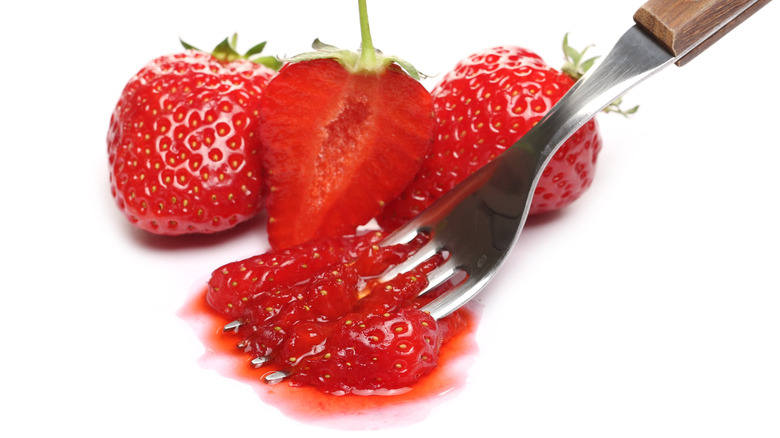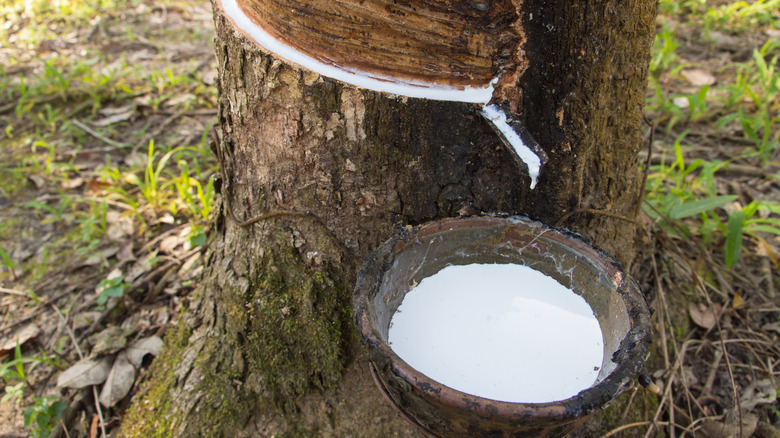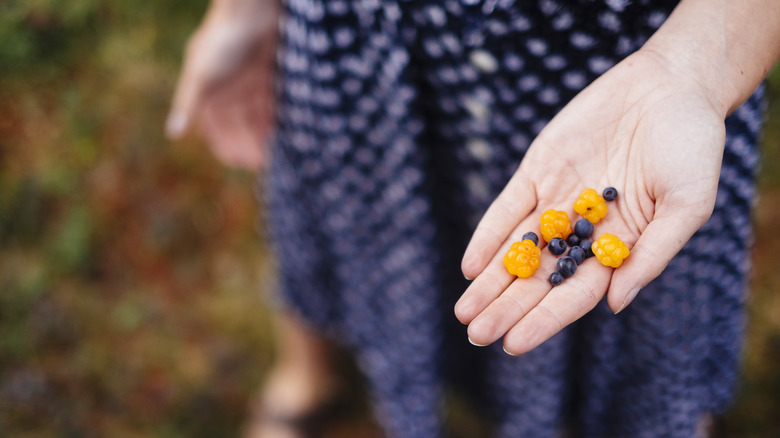Telltale Signs That Wild Berries Aren't Safe To Eat
Foraging for food and water in the wild can be a rewarding experience, connecting us to nature's bounty and providing a raw taste of the wilderness. However, amid the lush foliage and vibrant colors of the forest, identifying edible fruit can be a challenging task, fraught with potential risks. Even armed with a trusty field guide, there's always the looming specter of human error, leading to misidentification and potentially dangerous consequences.
While it's generally safer to bring food from home for nourishment during outdoor excursions, there are situations where we find ourselves in need of sustenance in the wild. We might be unexpectedly stranded, or perhaps we simply find the allure of devouring edible fruit straight from nature's hands irresistible. In these moments, knowing how to discern safe fruit from potentially harmful ones becomes paramount to our well-being.
Berries are like hidden treasures in the wild, packed with antioxidants and nutrients. When you stumble upon them in the forest, you'll probably wonder, "Can I eat these berries?" It's always best to consult with an expert to be sure since there are many plants we don't realize are deadly. But sometimes, you're out on your own without access to resources or expertise. In those situations, here are five signs that can help you figure out when wild berries are a no-go. Remember, it's essential to consider a combination of these signs rather than relying on just one for a definitive answer. By paying attention to multiple indicators, you'll become better at distinguishing which berries might not be safe to eat.
The berry gives off a foul or bitter smell
Before making contact with a berry, give it a whiff. What does it smell like? Smell is a powerful sense that can provide valuable clues when foraging for wild berries. While we may instinctively rely on sight and touch, aroma can offer invaluable clues about a berry's edibility.
One of the most straightforward signs to watch for is the scent of spoilage or fermentation. Just as with any perishable food, berries that have begun to spoil will emit a distinct sour or pungent odor reminiscent of decaying organic matter or even alcohol. These telltale aromas serve as a clear warning sign, indicating that the berries are past their prime and may cause gastrointestinal distress if consumed.
When it comes to toxicity, a few poisonous berries emit foul or unpleasant odors that can serve as a warning sign. Though this is not always the case, trust your instincts when it comes to assessing the smell of wild berries. If a berry smells unusual, unpleasant, or unlike anything you've encountered and eaten before, it's better to err on the side of caution and avoid eating it.
The berry feels mushy
Mushy berries can also be a telltale sign of spoilage, indicating that they may not be safe to eat. While some degree of softness is natural as berries ripen, excessively mushy or rotten berries should be avoided, as they may pose a risk to your health. This is because mushy berries may have undergone enzymatic degradation, causing them to lose their firm texture and plump feel, and become squishy or soft to the touch.
While not inherently unsafe in itself, one of the primary concerns with mushy berries is the potential for microbial contamination. As berries soften and break down, they provide an ideal environment for bacteria and fungi to thrive. Mold and mildew can quickly develop on the surface of mushy berries, leading to spoilage and the production of toxins that can be harmful if ingested. Sometimes, mold and mildew grow inside the flesh of the fruit where it is not easily apparent, meaning that consuming parts of berries or berries near other ones that have mold can still be dangerous, even if the pieces you are eating don't have any apparent mold on them.
The other parts of the plant cause an irritation
When assessing the safety of wild berries, it's not just the berries themselves that can provide valuable clues. Other parts of the berry plant, such as the leaves, stems, and even thorns, can also offer insights into their potential toxicity.
One strategy for gauging the safety of wild berries is to test other parts of the plant for potential irritants or toxins. For example, gently brushing the back of your hand against the leaves or stems of the plant and waiting for a few minutes can help determine if they cause any irritation or allergic reactions. Ideally, based on the Universal Edibility Test, you'd be able to wait for a few hours to see if you develop any reactions. If you notice redness, itching, or any other adverse effects, it's a sign that the plant may contain harmful compounds that could extend to the berries themselves.
Additionally, observing the overall health and appearance of the berry plant can provide valuable insights into its suitability for consumption. Healthy, vibrant plants with robust foliage are more likely to don safe and healthy berries than plants that appear wilted, diseased, or damaged. By incorporating these observations into your foraging practices, you can take a proactive approach to assessing the safety of wild berries.
The plant's sap or berry's juice irritates your skin
If the plant passes the surface-level touch test, use a fingernail to puncture the stem or leaf and observe if it releases any milky or sticky sap. If the sap is milky, it may contain chemical compounds such as latex or alkaloids, which have been reported to cause irritation or allergic reactions upon contact with the skin.
Leaving only a bit of the sap on your finger or wrist, wait and notice if the sap produces any signs of irritation, such as redness, itching, or a burning sensation. While the presence of irritating sap is not a definitive indicator of toxicity in the berries themselves, it does raise a red flag and warrants further investigation.
If you've tested the plant's sap and found no signs of irritation, the next step in assessing the safety of wild berries is to examine the berries themselves. Puncturing the berry allows you to observe its juice and assess whether the fruit in question produces any adverse reactions on your skin. With some juice on your finger or wrist, observe for any unwanted reactions.
The berry tastes odd
If you've made it through the previous tests without any signs of irritation, it's time to take a closer look at the berry itself. However, remember that reactions on our skin may differ from those on our face or mouth. So, before diving in, let's proceed with caution. Gently bring the berry close to your mouth, but don't take a bite just yet. Instead, place the berry against your lips and let it rest there for a moment. Pay attention to any sensations—do you feel any tingling, burning, or discomfort? If not, proceed to the next step.
Now, it's time to take a small bite of the berry. Chew it slowly and pay close attention to the taste. If the berry tastes unusual or unpleasant, especially if it's bitter or soapy, it's a warning sign that it may not be safe to consume. Spit it out immediately and rinse your mouth thoroughly with water. On the other hand, if the berry tastes sweet and pleasant, that's a good sign. However, it's essential to wait and observe for any adverse reactions. Give yourself at least 15 minutes to see if you experience any nausea or discomfort in your mouth or stomach. Ideally, you'll have a few hours to spare for observation.
If everything checks out and you feel fine after the waiting period, it's likely that the berry is safe to eat. However, if you have any doubts or concerns, it's best to refrain and seek guidance from an expert.





